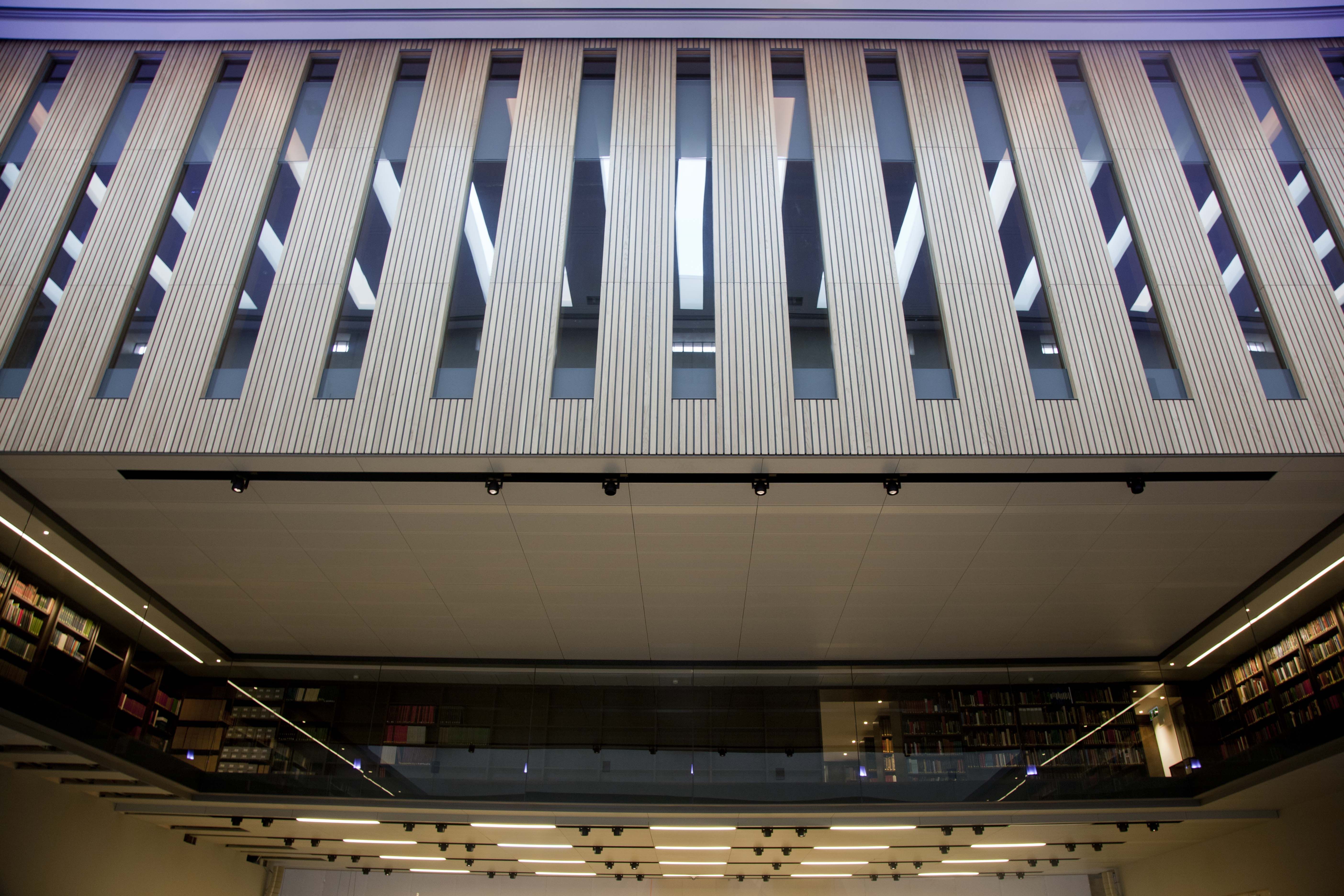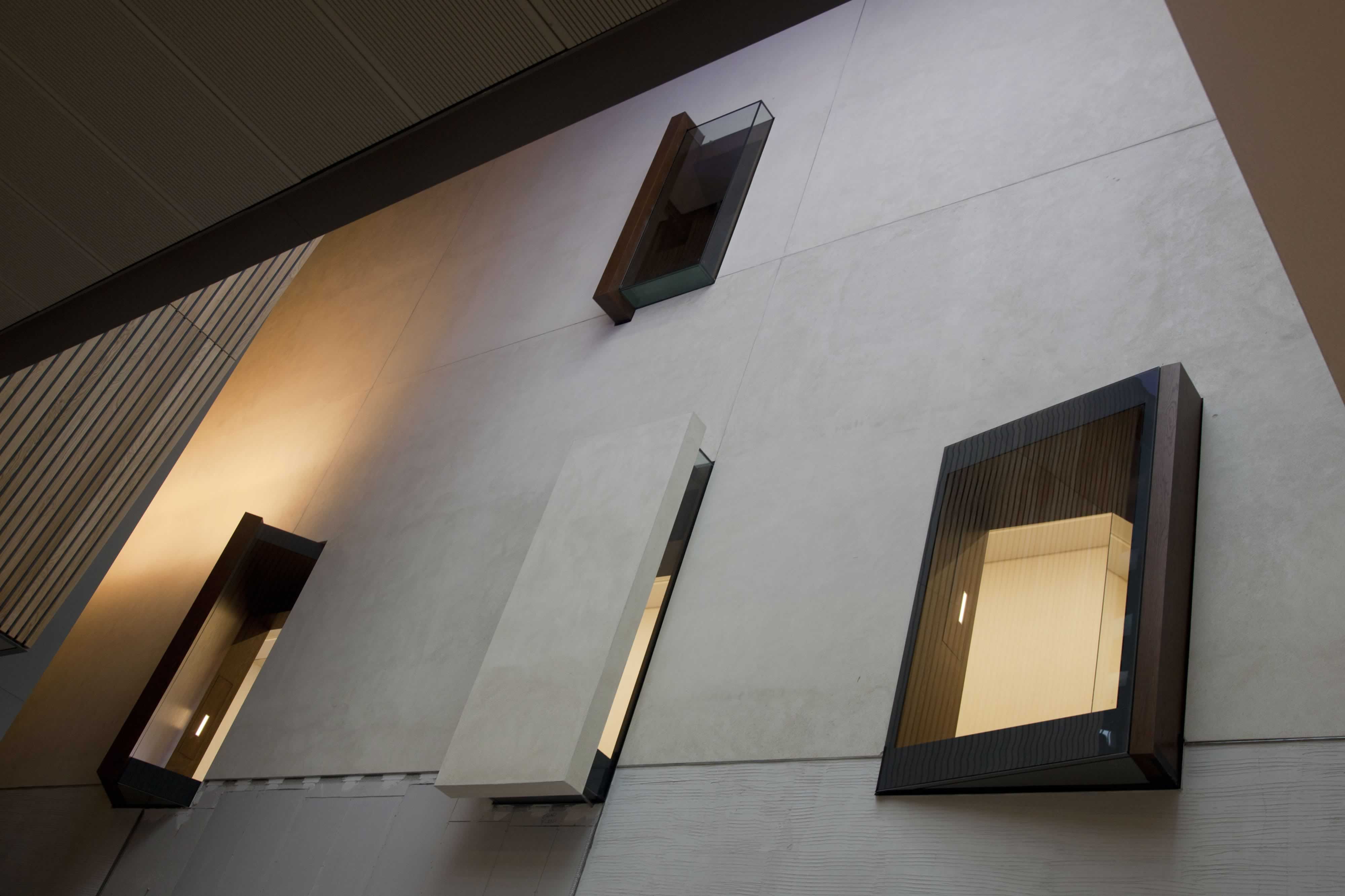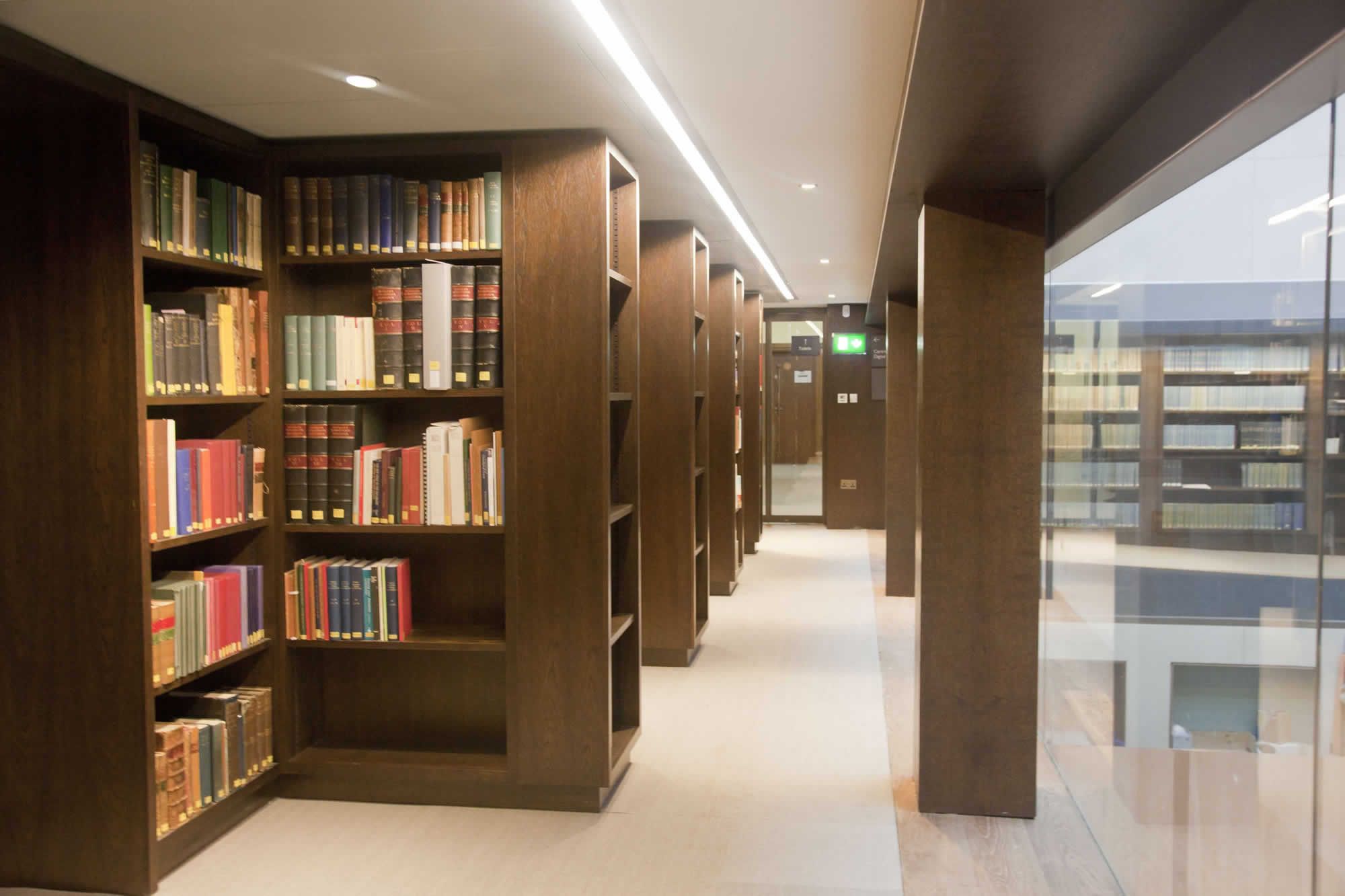
Key Facts
-
Client Name:University of Oxford
-
Principal Contractor:MACE Ltd
-
Architect:Wilkinson Eyre Architect
-
Address:New Bodleian Library
Broad Street
Oxford
Oxfordshire
OX1 3BG -
Value of Works:£5,000,000
-
Start Date:July 2013
-
End Date:August 2014
Project Description
The Weston Library, formerly The New Bodleian Library, was designed by Sir Giles Gilbert Scott in the 1930s. The building is Grade II listed and is located on the corner of Broad Street and Parks Road in the historic centre of Oxford.
The key client objectives of the £80 million refurbishment project were to safeguard the library’s collections, modernise research facilities and upgrade the infrastructure without compromising the historic character of the building.
SCL contributed to the prestigious development by carrying out a £1 million aluminium sash window refurbishment package, followed by a £4 million internal joinery & fit-out package under a JCT Design & Build Subcontract.


Scope of Works
Joinery & Fit-out works including: 4450/5050 Window Refurbishment Package 3500:
- Original Timber Door - Refurbished / Fire Rating and Acoustic Upgrade
- New Timber doors
- Original Metal and Glass Doors and Screens Refurbishment
- New Metal doors
- New to Match Original Metal and Glass Door
- Ironmongery
- Timber Ceilings; New Acoustic Ceilings
- Timber Ceilings; Refurbished
- Bespoke Joinery; Timber Shelving, Study Carrels, Storage walls
- Lecture Theatre Flooring and steel support
- Hardwood Flooring
- Skirting
- Windows to Upper Stack - North and South
- Stack Timber Cladding
- Stairs to Reading Room 3
- Kitchen worktops & store shelving
- General timber works; duct backings, boxing’s to conceal services, fixing patresses
- Removal & Salvaged Existing Windows
- Replace Broken Glass
- Clean and Refurbish Existing Windows
The scope of works was to clean and refurbish circa 300nr existing aluminium sash windows whilst maintaining the original anodised finish, as well as the fabrication and installation of new Loading Bay entrance doors and 20nr 3m tall windows to the upper Reading Room 3 – all of which had to replicate the existing multi-pane anodised aluminium finish.
As a listed building and working with existing in-situ materials, the main challenge that our team had to overcome was that there was no clear specification as to how the works should be carried out. Therefore, working closely with our metalworker, the first task was to identify appropriate washing agents and differing gauges of non-abrasive cleaning tools to carry out a series of tests on 4nr large sacrificial windows that had to be removed to form the new open entrance. In order to monitor the condition of the anodising, elcometer readings had to be taken before / after the works to measure the effect each cleaning method had on the anodised finish to the nearest micron. This was then submitted to the architect as a report with our recommended cleaning strategy and detail drawings of how we proposed to break-out and re-glaze the existing 6mm clear float glass with 9mm UV laminate glass, new aluminium beading and clear silicone mastic as well as repairing and replacing ironmongery to working order.
Once our proposals had been accepted by the architect, we surveyed every window in the building (internally and externally) and set-up a master window schedule as a management tool to control the works internally and report progress to the client. An unexpected variable that effected the progress of our works was the weather, as we couldn’t work in accordance with our cleaning strategy to satisfy manufacturers installation instructions (and subsequent warranties), as well as record accurate elcometer data in wet and rainy conditions. Coupled with a narrow external working scaffold and the stone cleaning contractor following our works, access became difficult to co-ordinate. The window control schedule was combined with a co-ordinated programme per building elevation and was issued weekly to the main contractor and other subcontractors working in the same areas.
The package was unusual for us but it was very rewarding working so closely with the project architect. We learnt a lot as a team in adding a new area of experience and understanding to the company, whilst utilising our more regular skill set to control and report progress to the client and ensure we completed our works on time despite ever changing British winter conditions.
Internal Doors – Existing Timber Door Refurbishment, New Oak Doors, New Metal DoorsNumerous products were tested to strip back paint from circa 100nr door leaves and frames to reveal the original solid and timber veneer finishes which then had to be repaired and filled to conceal 30 years of damage, before polishing and allocating into appropriate sets for re-assembly.
As the doors fell within the building’s heritage items, a major challenge was to do refurb them without the use of any VOC (Volatile Organic Compounds) that could have a detrimental effect on the original timber. We set-up a ‘door rejuvenation workshop’ on site which included an ironmongery store, and developed another control schedule to survey and monitor each door for incorporation into our project O&M Manual. Once the strip back and polishing methodology had been approved, refurbing and re-finishing the existing heritage door furniture was the next serious challenge we had to overcome. Working closely with our ironmongery supplier, all brass door knobs, lock cases, signage, hinges and floor springs had to be carefully removed, cleaned, re-finished and allocated into sets for re-instatement. This required numerous workshops with the architect to develop a strategy that combined recoverable items with new hardware, and then numerous internal workshops to ensure every piece of heritage brass furniture was accounted for, recorded and stored safely on site, before being sent away for refurbishment, returned and installed near completion. One of the biggest achievements of the project for us as a team was handing over the final doors without a single piece of ironmongery having been lost or damaged on site.
Internal Joinery – Atrium Stack CladdingOne of the highest value elements of our joinery package was Tapered Oak Slated Acoustic Cladding to the central atrium. Spread between the North and South stack, the scope of works was over 700m2 in total.
As the stacks were tapered from top to bottom, it was critical that we produced a series of setting-out elevations (accurate to the millimetre) to plot our first fix timber frameworks and grounds as well as finished cladding panels which would return directly into our timber acoustic ceilings in the main entrance. The setting-out, drawing and joinery manufacture proved to be the easier part of the works, with restricted narrow scaffold access making the site install element the trickiest part to manage. The method statement had to be carefully considered with a detailed lifting plan to manoeuvre each panel into position before levelling, secret fixing and then protecting ahead of scaffold strike.
Although the site install progressed slower than first envisaged due to the restricted access, this proved to be one of the most rewarding elements of the project due to the quality of finish and praise received from a happy architect on completion.
Internal Joinery – Link Bridge & Reading Rooms New Bespoke ShelvingOne of the main client aims was to safeguard the collections and provide new and enhanced storage for a higher volume of prestigious material in the main Reading Rooms. This involved developing bespoke book shelf designs with the architect and co-ordinating with the M&E contractor to provide concealed service routes.
Once the setting-out and design had been agreed, the main challenge we faced was satisfying the architects colour scheme as 3nr finishes had been specified throughout the different reading areas – light, mid-tone (to match existing), and dark Oak. By introducing subtle stains and tweaking the final sheen levels applied to both veneered and solid oak sections, we established a control sample for each area and set-up a carpentry team responsible for each stain. As a result of the staining process, we were aware that any slight damage would show up heavily and be difficult to polish to an exact match on site. Therefore, a protection and handover plan was developed for each individual room.
